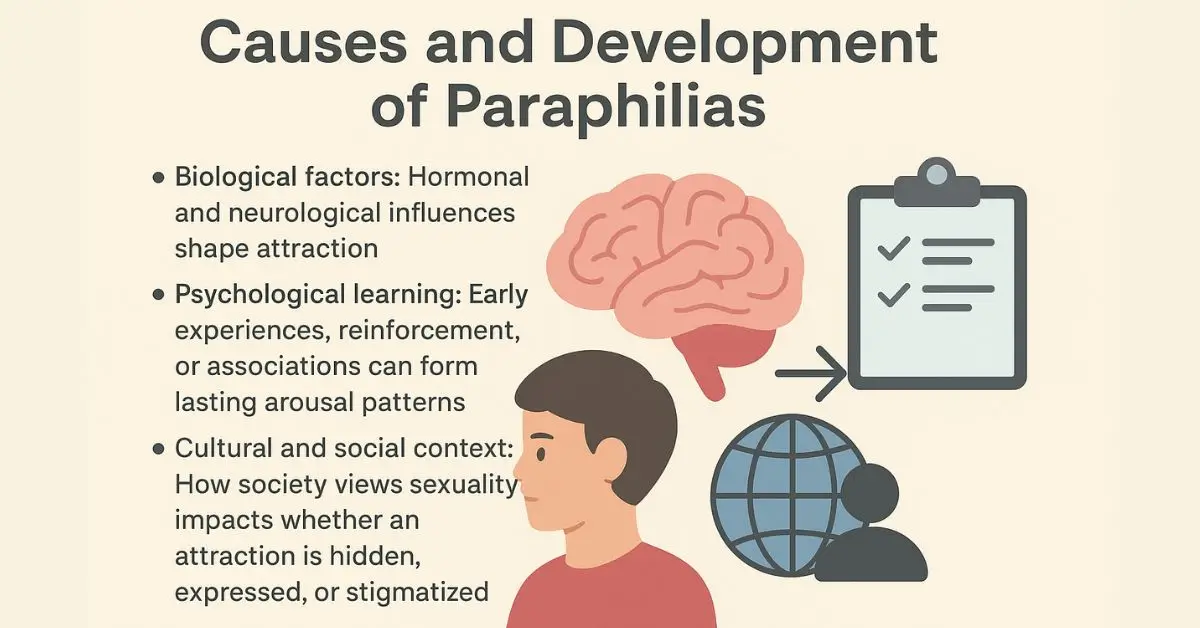Human sexuality is complex, layered, and diverse. Some attractions fall outside cultural norms yet remain an important part of psychological research. Preggophilia, sexual attraction to pregnancy, is one such example. For researchers, clinicians, and educators, this topic raises critical questions: How do paraphilias develop? When do they intersect with mental health? And how should professionals address them without reinforcing stigma?
This article unpacks preggophilia using evidence from sexual behavior studies, offering insights that help academics, therapists, and policy makers better understand paraphilias in psychology.
Quick Answer
Preggophilia is a paraphilia describing sexual attraction to pregnancy. While it’s not widely studied compared to other fetishes, psychology researchers classify it under unconventional sexual interests, and it’s best understood within the broader framework of human sexuality, desire, and mental health.
EXPLORE MORE
What Are Paraphilias in Psychology?
Paraphilias are patterns of attraction or arousal that involve unusual targets or scenarios. According to the DSM-5 (American Psychiatric Association), paraphilias are not automatically disorders—they only cross into clinical concern when they cause distress or harm.
Key points:
- Paraphilias include a wide range of interests, from common kinks to rare fetishes.
- Many individuals experience paraphilic interests without psychological impairment.
- Understanding these interests requires a balance of clinical analysis and respect for sexual diversity.
Understanding Fetish Psychology in Adults
Fetishes, including pregnancy-related attraction, are often rooted in early psychological and developmental factors. Research at Harvard.edu highlights how arousal patterns may form through conditioning or imprinting during formative years.
For adults, these interests can become an integrated part of sexual identity. Most experience them without negative consequences. Problems only arise when distress, secrecy, or stigma interferes with well-being.
Causes and Development of Paraphilias

While there’s no single cause, studies suggest:
- Biological factors: Hormonal and neurological influences shape attraction.
- Psychological learning: Early experiences, reinforcement, or associations can form lasting arousal patterns.
- Cultural and social context: How society views sexuality impacts whether an attraction is hidden, expressed, or stigmatized.
The APA.org notes that human sexuality exists on a spectrum, and paraphilias reflect the natural variety of desire—even if socially unconventional.
Psychological Research on Pregnancy-Related Attraction
Preggophilia specifically remains under-researched. However, broader sexual behavior studies at NIH.gov suggest that pregnancy may symbolize fertility, nurturing, or intimacy—elements that influence attraction.
Some psychologists interpret pregnancy-related attraction as tied to themes of reproduction, security, or body transformation, though more empirical studies are needed.
Is Fetish Behavior Considered a Disorder?
Not necessarily. The DSM-5 clarifies:
- A fetish is not a disorder if it doesn’t cause distress or harm.
- Many individuals with unconventional interests function normally in relationships.
- Only when distress, compulsive behavior, or risk emerges does clinical treatment become necessary.
Clinical Approaches to Fetishes
Therapists use a range of strategies when someone seeks help for a fetish:
- Psychoeducation: Normalizing sexual diversity reduces shame.
- Cognitive-behavioral therapy (CBT): Helps clients manage distressing thoughts or compulsions.
- Acceptance approaches: Encouraging integration of the interest into healthy, consensual sexual life.
Clinical practice emphasizes respect, confidentiality, and avoiding pathologizing unless clearly warranted.
Social Stigma and Sexuality
Stigma is often more damaging than the fetish itself. Society tends to label unconventional interests as abnormal, which can:
- Increase secrecy and shame
- Prevent individuals from seeking therapy
- Reinforce stereotypes about sexual “deviance”
Researchers at PsychologyToday.com note that reducing stigma is key for sexual health education and public understanding.
Difference Between Kink and Paraphilia
- Kink: A broad umbrella for non-mainstream but consensual sexual interests.
- Paraphilia: A psychological term used in clinical and research contexts.
- Overlap: Not all kinks are paraphilias, and not all paraphilias cause clinical concern.
This distinction helps professionals avoid conflating harmless preferences with pathology.
Studies on Sexual Diversity in Human Behavior
Recent studies emphasize that sexual diversity—including interests like preggophilia—is part of the human condition. Expanding research in this area strengthens public health approaches and ensures therapy models stay inclusive.
EXPERT ANSWERS
Is preggophilia common?
There’s little empirical data. Most evidence comes from anecdotal reports and online communities.
What’s the difference between preggophilia and reproductive attraction?
Preggophilia centers on attraction to the state of pregnancy itself, while reproductive attraction may relate more broadly to fertility cues.
Can preggophilia cause relationship challenges?
Yes—mainly due to secrecy or stigma. Open communication with partners and professional guidance can reduce challenges.
How do psychologists study rare paraphilias?
Through case studies, surveys, and broader research into sexual behavior patterns.
FAQ’s
Q1. How do psychologists define sexual fetishes?
They define them as persistent attractions or arousal patterns toward specific objects, situations, or states (e.g., pregnancy).
Q2. Are paraphilias always harmful?
No. Harm occurs only when distress, compulsion, or non-consensual behavior is involved.
Q3. What role does culture play in fetish psychology?
Culture shapes how fetishes are viewed—either normalized, stigmatized, or pathologized.
Author Bio
Written by Dr. Jonathan Reed, a content writer and researcher with expertise in psychology and human behavior. Dr. Reed holds a background in clinical psychology and has contributed to multiple academic publications aimed at making complex research accessible to a wider audience.on?












